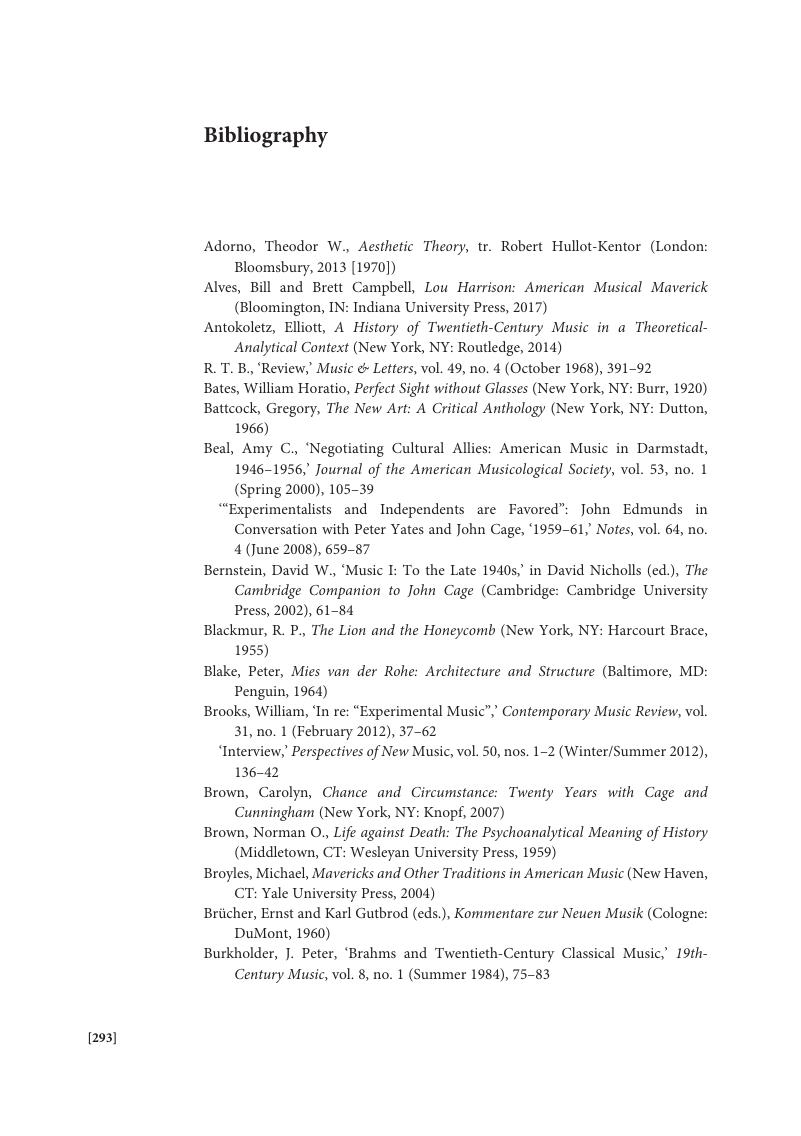Bibliography
Published online by Cambridge University Press: 25 October 2019
Summary

- Type
- Chapter
- Information
- John Cage and Peter YatesCorrespondence on Music Criticism and Aesthetics, pp. 293 - 300Publisher: Cambridge University PressPrint publication year: 2019



